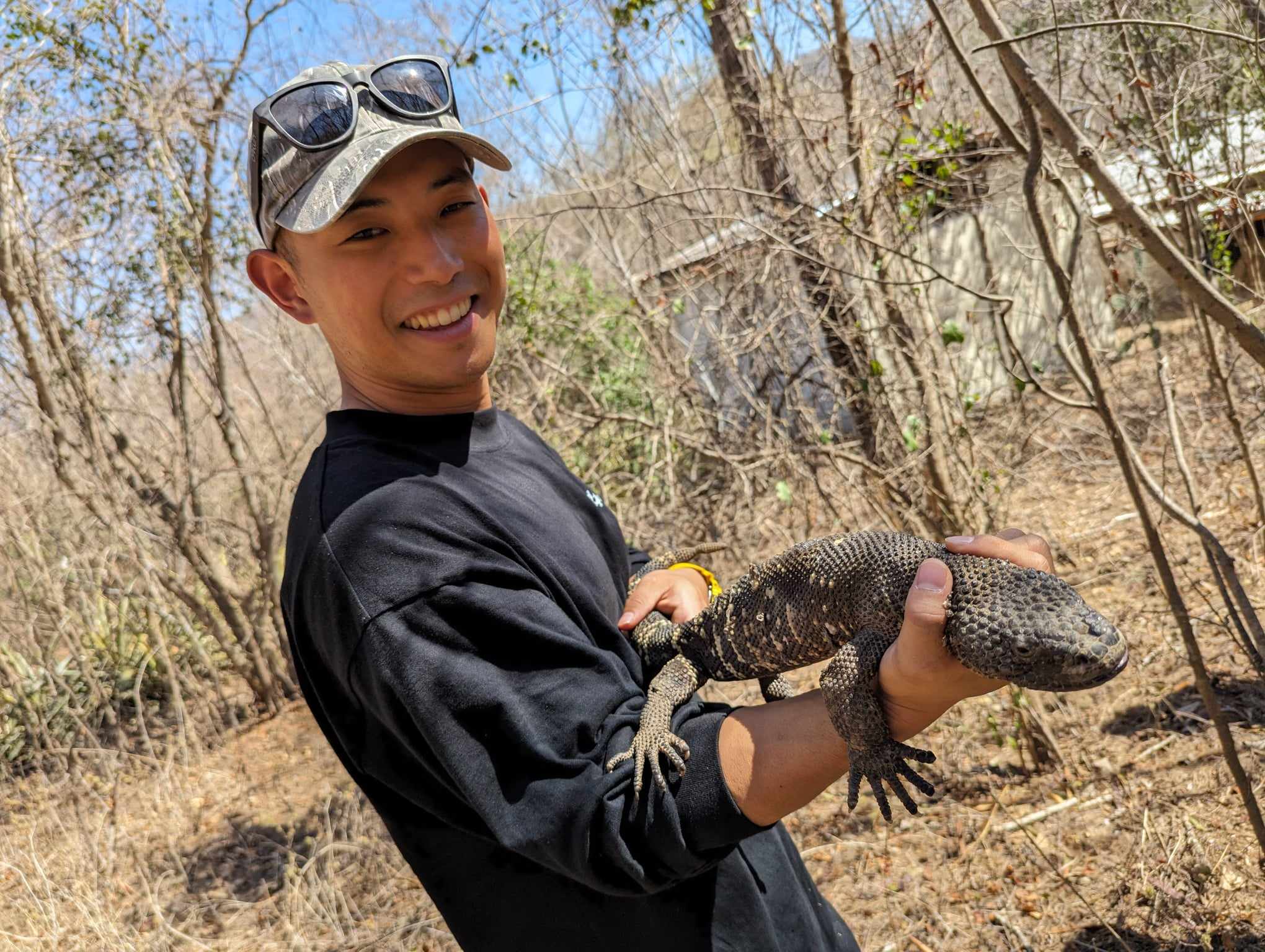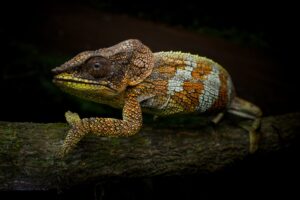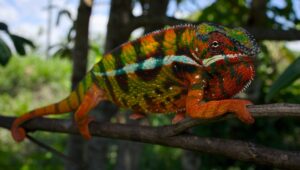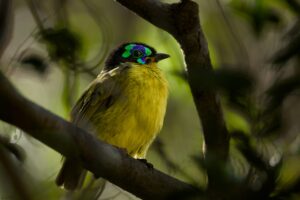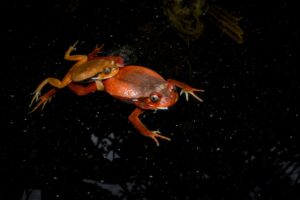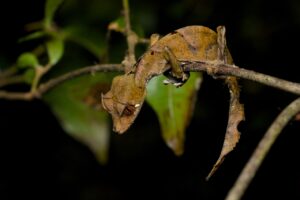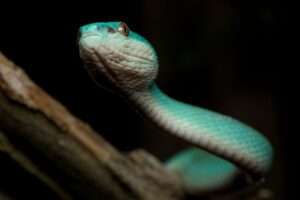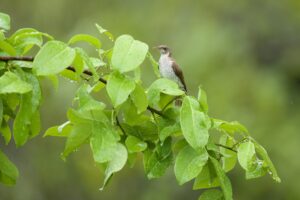The Amazon rainforest of Ecuador is home to a variety of colorful and mysterious poison frogs. Among them, one of the easiest to observe is the Ecuador Poison Frog (scientific name: Ameerega bilinguis). In this article, I will share my experience of spotting this fascinating frog in the wild.
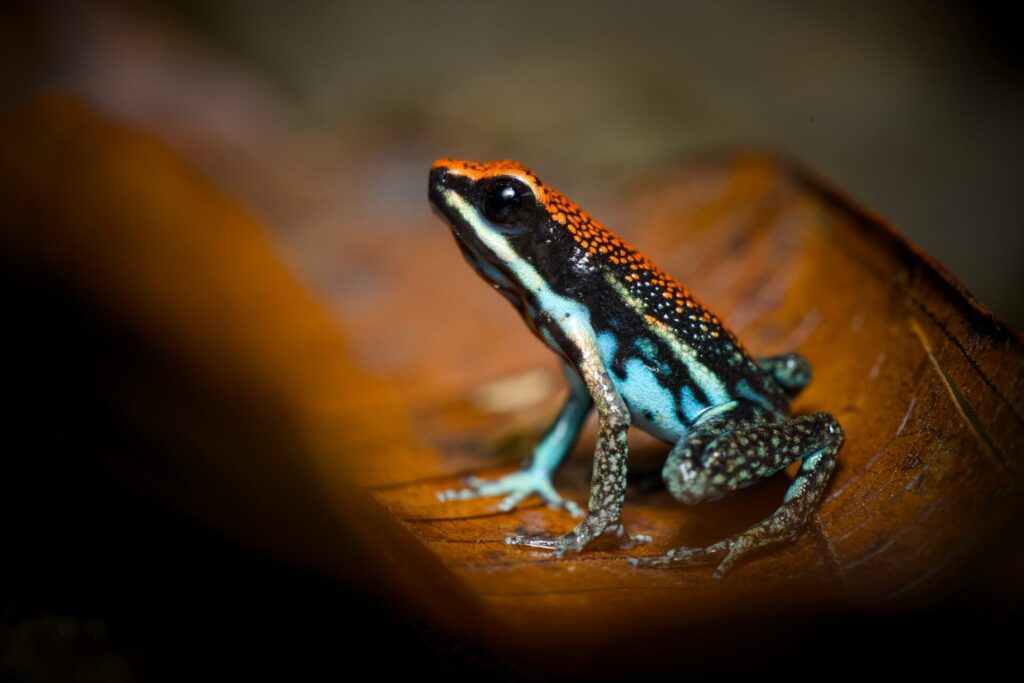
Habitat and Environment
The Ecuador Poison Frog is found primarily in the Napo River basin in Ecuador, with its range extending into southwestern Colombia (Putumayo Department) and northern Peru. It inhabits forests at altitudes between 200 to 700 meters, where it is often seen among leaf litter in terra firme forests and seasonally flooded várzea forests.
For this trip, I ventured into the lowland Amazon rainforest of Ecuador and searched for the frog along streams in the jungle.
Observation Tips
While spotting the Ecuador Poison Frog is not particularly difficult, timing and patience are key.
Activity Time
This frog is diurnal, meaning it is active during the day. However, the best time to find it is within a few hours after rainfall. On the day I successfully observed it, there was rain from early morning until around 9 AM. Shortly after the rain stopped, I entered the forest, and suddenly, the once silent jungle was filled with the calls of frogs.
How to Spot One
Even when you hear their calls, actually seeing them can be challenging. I had to carefully observe the area where the sounds were coming from, staying motionless and enduring swarms of mosquitoes for about 15 minutes. Then, finally, one emerged from the leaf litter, giving me the perfect opportunity to take a photo.
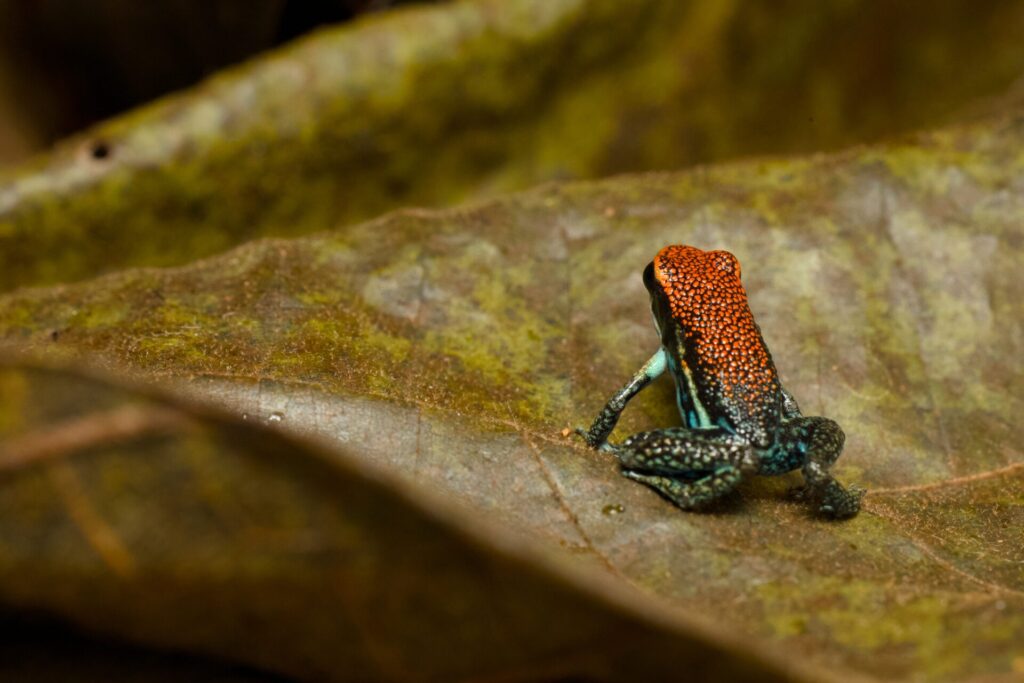
The Origin of Its Name
The name “poison frog” comes from the indigenous practice of using frog toxins to coat blow darts for hunting.
However, contrary to popular belief, these frogs do not produce their own poison. Instead, they accumulate toxins from the small invertebrates they consume. Because of this, the potency of their poison varies depending on their diet. Interestingly, some indigenous hunters report that the toxins from these frogs can sometimes be ineffective, leading them to prefer more reliable sources of poison, such as certain plants or venomous ants known as “Conga”.
Conclusion
The Ecuador Poison Frog is a fascinating species, living quietly in the depths of the jungle. While they are not particularly rare, spotting them requires the right conditions.
If you ever visit the Amazon, make sure to time your search carefully and enjoy the challenge of finding one!

